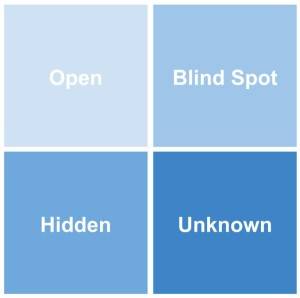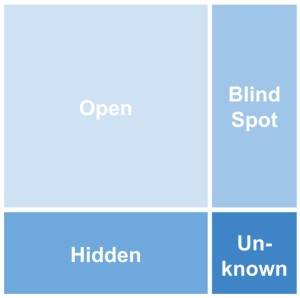We all know that trust is the cornerstone of all good relationships, whether that be with family members, friends or even with our teams at work.
Patrick Lencioni backs this notion up in his book The Five Dysfunctions of a Team by illustrating that an ‘absence of trust’ will mean teams are unlikely to be successful. I am sure that many of us have come across situations such as this, where a lack of trust has hindered us from being successful, whether this be in a team setting, a manager/employee setting or a client/supplier setting.
How is it possible to start building trust, so that we can have better relationships that allow us to hopefully be more successful?
In 1955, two American psychologists Joseph Luft and Harry Ingham created a model called the Johari Window. The idea was to improve the understanding between individuals: both about themselves (by receiving honest feedback) and of others (by the open disclosure of information by individuals). Their research revealed that, by disclosing information about yourself, you end up building trust with the person you have shared that information with, and that by receiving honest feedback you are able to learn more about yourself and grow as an individual.
The Johari Window has four quadrants. These are:
- Open area. The open area represents things that you know about yourself and the things that others know about you. So things that are clear to be seen by all, your behaviours, knowledge, attitudes and the stuff you post on to Facebook.
- Blind area. This area represents the things that you are unaware of about yourself, but that can be seen by others. As well as including things such as skills that you did not know you had, it could also include deeper issues that may be difficult to face directly as individuals, such as feelings of inadequacy or incompetence.
- Hidden area. The hidden area represents the things that you know about yourself but have not shared with others.
- Unknown area. This area includes the things that are yet to be discovered, so therefore are not known by yourself or by others.

The open area is the most important quadrant, and the goal is to increase the size of this area. By doing this you start to have more trustful and productive relationships. This can be achieved by:
- Receiving feedback from others so that you begin to learn and understand more about yourself and how others perceive you. By doing this your Blind area will start to reduce.
- Sharing information about yourself so that others can begin to learn about you and understand you better as an individual. This is usually the stuff that cannot just be known simply by observing you. Again by doing this your hidden area will start to reduce.

I suspect that an evolutionary approach works best and that it is probably wise to progressively disclose information and also to gradually invite feedback
The research by Luft and Ingham concluded that people and teams with large open areas have the more trustful and productive relationships, and this leads them to be more successful.
I’ve only recently been introduced to this model by some colleagues, but I’d like to see the results of using this model with teams that I work with in the future.
If you’ve used the Johari Window or another model to successfully increase trust in relationships then we’d love to hear from you.
Thanks to: Marit Kile Hartshorn and Kate Rees
Image credit: Jérémy Lelièvre
